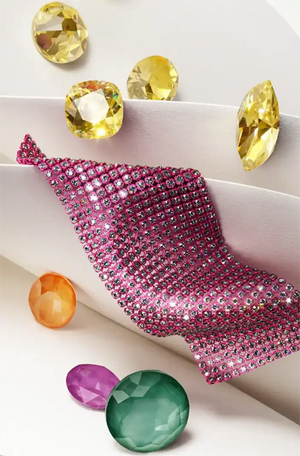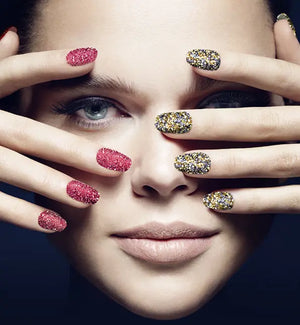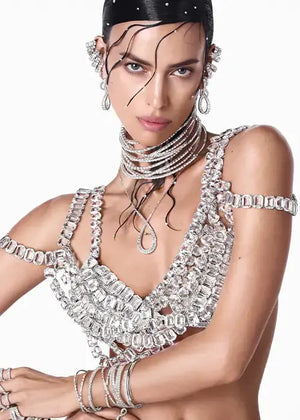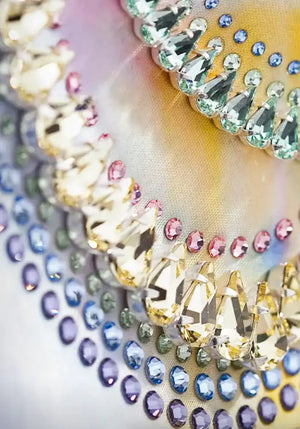
History of Necklace and Pendant: A Comprehensive Exploration
A pendant necklace is perhaps one of the simplest and chicest additions to any outfit, whether it be a casual ensemble or a show-stopping evening gown - but did you know that pendant necklaces were perhaps one of the earliest forms of jewelry worn by humans?
Not simply that, but the evolution of necklaces and pendants is a complex narrative that intertwines with human history, culture, and art; in short, necklaces haven’t always just been decorative. In the following article, we’re going to take a look into the intricate history of necklaces and pendants, documenting their transformation from ancient times to the contemporary era. Let’s dive in!
The Genesis of Necklaces and Pendants
Necklaces, arguably one of the earliest forms of adornment used by humans, have their origins tracing back to the Paleolithic era; primitive necklaces crafted from naturally available materials such as bones, shells, and teeth, not only served aesthetic purposes but also played key roles in societal and religious rituals.
Symbolism and Cultural Context
Throughout history, necklaces and pendants have been imbued with profound symbolic significance. In ancient civilizations, such as Egypt, they were often integrated with amulets and believed to possess protective and spiritual powers; in the Middle Ages, these ornaments evolved into symbols of piety and indicators of social status. Even today, it could be argued that sporting a high-karat gold pendant or diamond necklace is a marker of social status, and in particular, of tremendous wealth; in ancient civilizations, you couldn’t simply purchase Swarovski pendants online and create a beautiful necklace; jewels were often reserved for the upper classes and in some cases, royalty.
Advancements in Design and Technique
So, how has the design process for necklaces changed and evolved throughout history? Let’s take a look:
Bronze and Iron Age Innovations
The advent of the Bronze and Iron Ages marked significant advancements in necklace and pendant designs, with craftsmen beginning to experiment with metalworking techniques, which lead to more durable and intricate designs. This era also saw the introduction of metal chains and the use of soldering to create complex patterns and shapes, a departure from the simple stringing of beads and stones prevalent in earlier periods.
Renaissance Craftsmanship and Artistry
During the opulent Renaissance era, jewelry design underwent another massive transformation driven by a renewed interest in the arts and classical antiquity; goldsmiths and jewelers developed new techniques, such as enameling and the setting of precious gemstones in intricate patterns. This period also saw the rise of the cameo and intaglio, showcasing detailed carvings that were both artistic and symbolic.
Industrial Revolution: Mass Production and Accessibility
The Industrial Revolution was a key turning point in the history of jewelry making, and the introduction of machinery and new production methods allowed for mass production of necklaces and pendants, which made them more accessible to the middle class. During this era, it was also common to see the use of less expensive materials like glass and base metals, which broadened the range of styles and designs available.
20th Century Technological Innovations
Coming up to the 20th century, the war-struck era brought about significant technological advancements in jewelry manufacturing, including the development of new materials such as plastics and synthetic gemstones. Techniques like electroplating and laser cutting were also established, enabling more precise and complex designs and reflecting the modernist aesthetic of the time.
Contemporary Digital Technologies
Journeying back to the present, the integration of digital technology in jewelry design has revolutionized the industry, most notably with computer-aided design. Put simply, computer-aided design (CAD) and 3D printing have opened up new frontiers in customization and complexity - in effect, designers are able to create pieces that were previously impossible to make by hand. Personalization is also one of the most notable hallmarks of modern jewelry, with consumers increasingly seeking unique, tailor-made pieces.
Necklaces and Pendants: Iconic Styles Through the Ages
So, we’ve taken a trip back in time to examine the jewelry manufacturing process, but how have necklace and pendant styles evolved in recent eras? Let’s take a look at some influential periods:
The Elegance of the Victorian Era
In the Victorian era, necklaces and pendants were symbols of opulence and sophistication, and this period was characterized by intricate designs featuring pearls, cameos, and precious gemstones like diamonds and emeralds. Lockets and chokers also became particularly popular during the era, often serving as sentimental keepsakes. And if you feel like creating your own Renaissance-inspired necklaces, make sure to check out our guide to creating pearl necklaces over on our blog!
Art Nouveau: Nature-Inspired Creations
The Art Nouveau period, spanning the late 19th and early 20th centuries, brought a distinct shift in jewelry design, and Art Deco pieces are still incredibly popular today. Necklaces and pendants embraced organic shapes, fluid lines, and motifs inspired by nature, such as flowers and insects, and this period favored the use of new materials and techniques, blending art with craftsmanship.
Contemporary Fusion and Personalization
In the contemporary era, necklaces and pendants represent a fusion of past styles with modern influences, and current trends both on and off the high street exhibit a spectrum ranging from minimalist designs to bold statement pieces; traditional motifs blended with modern elements.
The growing emphasis on sustainability and ethical sourcing in jewelry manufacturing also reflects a shift towards responsible consumerism, while technological advancements have ushered in new design possibilities, fostering a greater degree of personalization and uniqueness in jewelry.







